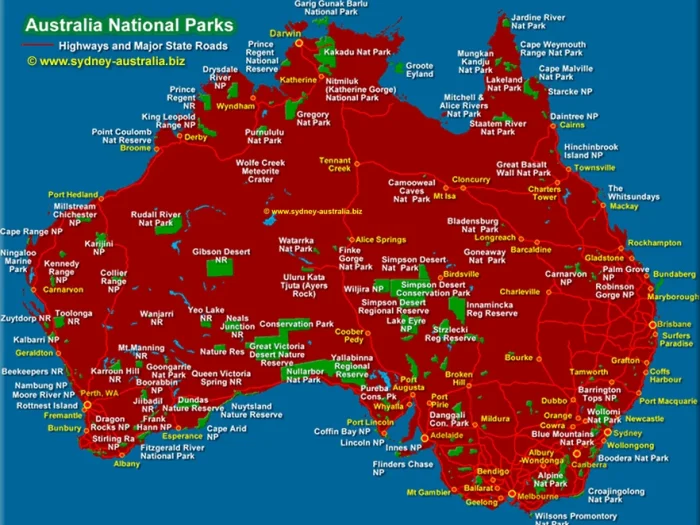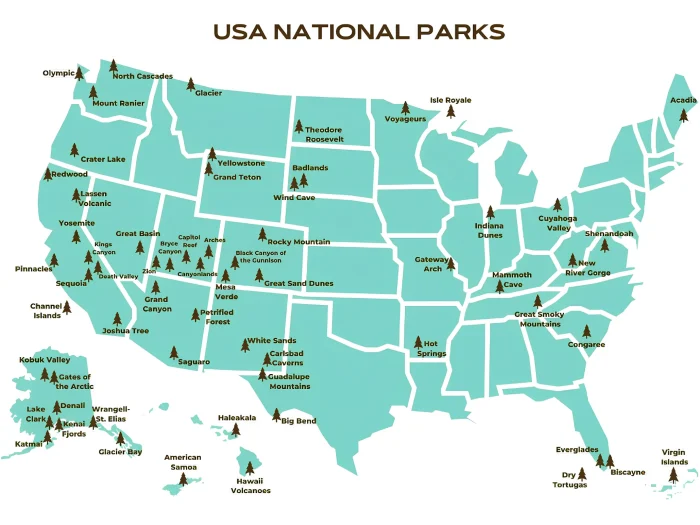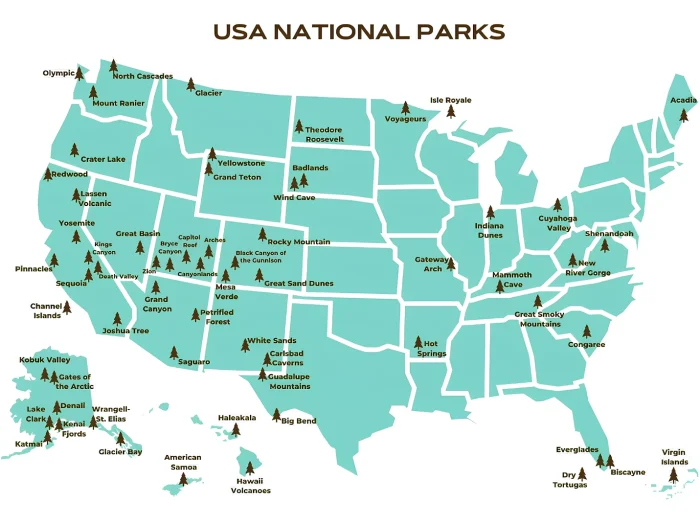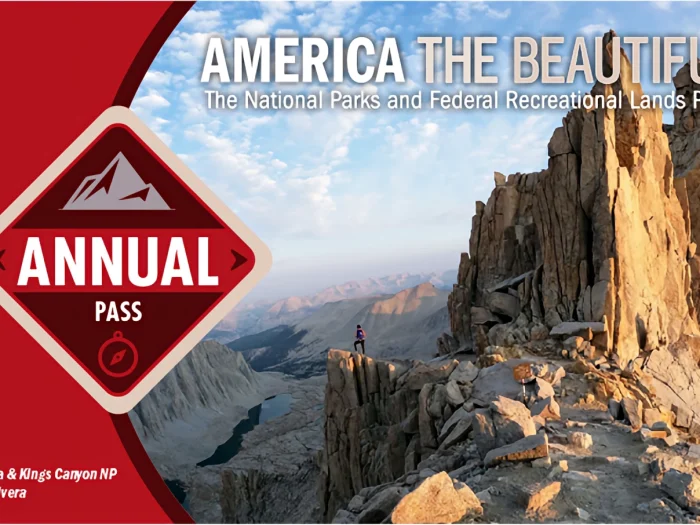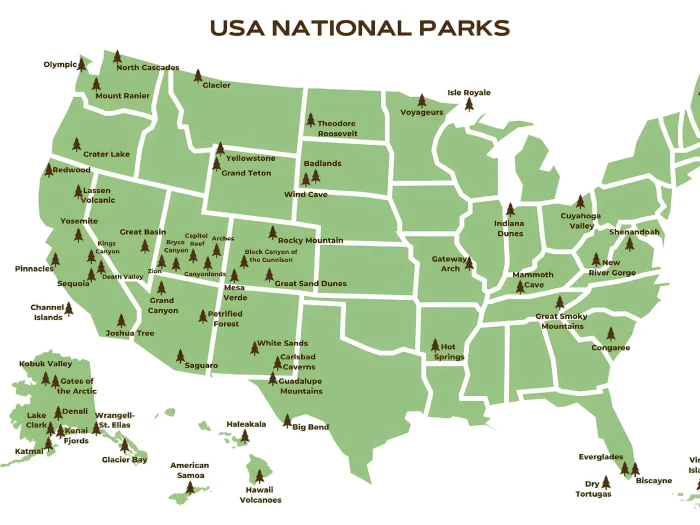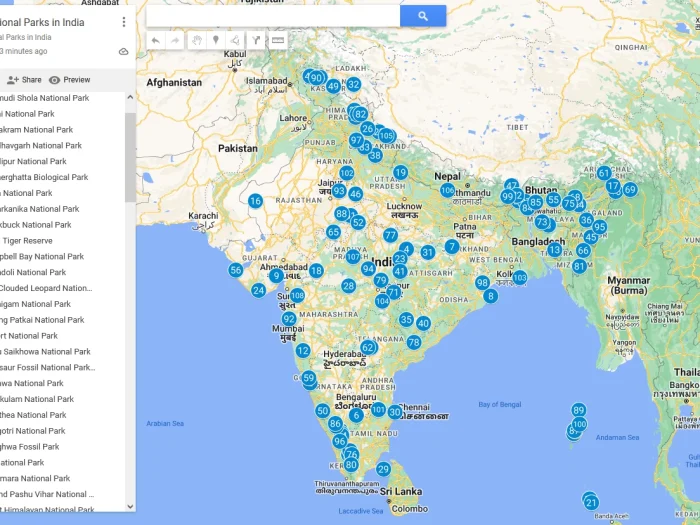Top National Parks for Student Field Trips: Combining Adventure and Education
One of the cornerstones of education is field excursions, which give students an opportunity to interact with the outside world outside of classroom settings. National parks provide an ideal location for such experiences – from majestic Rocky Mountain ranges to ancient woods in Pacific Northwest regions – offering diverse landscapes that captivate children while deepening their understanding of ecology, geology, and environmental responsibility. Here are a few great national parks for student field excursions that combine adventure with learning!
1. Yellowstone National Park of Wyoming
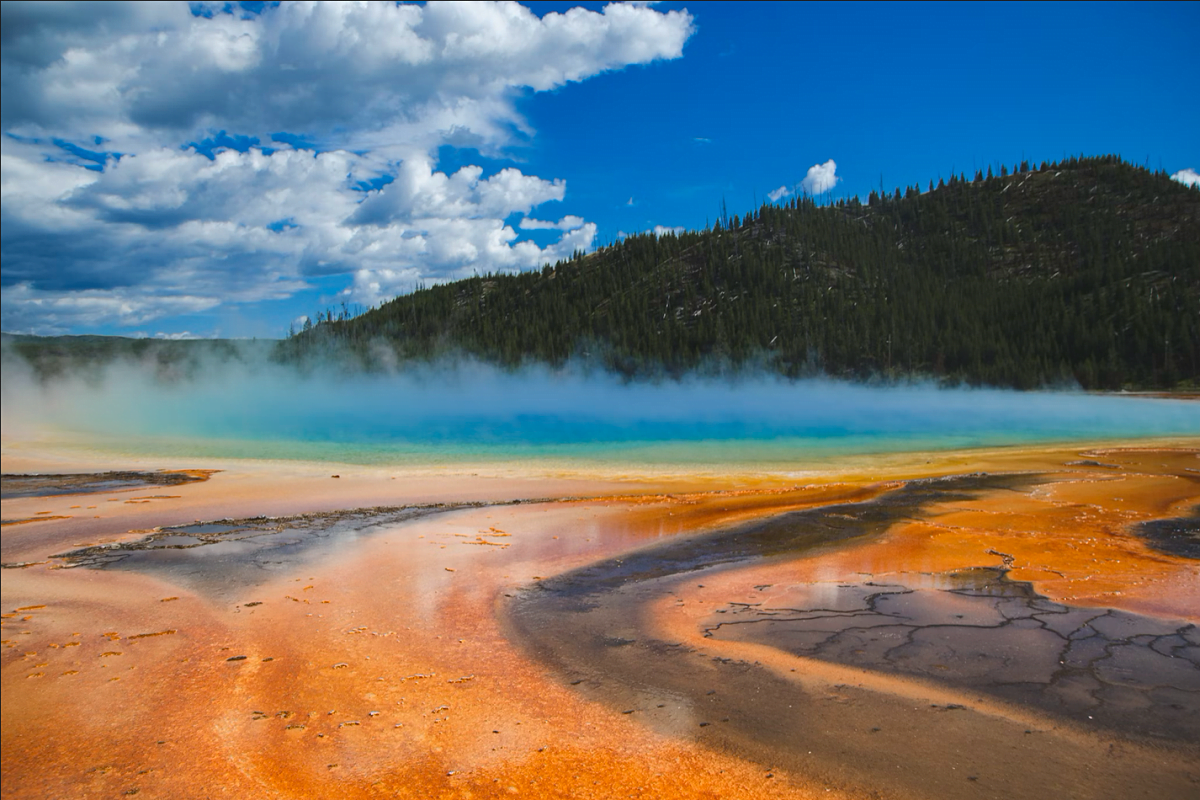
Yellowstone National Park, our nation’s first national park, is home to an abundance of animals and geological marvels that inspire children’s learning of geothermal energy and volcanic activity. Students have an outstanding opportunity to study geothermal energy with Old Faithful geyser and the Grand Prismatic Spring as learning tools; its many habitats, ranging from vast grasslands to lush woods, provide living laboratories for studying conservation and biodiversity studies; ranger-led programs provide engaging field trip experiences which explore its rich history as well as current conservation initiatives in greater depth than any other park could ever offer! Parks can give great inspiration for students, but in case you need professional writing help, see who can “write my paper”.
2. Grand Canyon National Park of Arizona
The Grand Canyon serves as both an impressive natural wonder and a classroom of geology and earth sciences, thanks to its stratified rock formations that provide a chronological record of Earth’s past. Pupils can explore this massive monument while uncovering the processes behind its creation as they discover sedimentary rock strata on numerous paths and views within its vast borders. Furthermore, ranger-led programs in park ranger programs focus on erosion caused by the Colorado River as a factor in creating this geological formation.
3. Yosemite National Park of California
Yosemite National Park offers visitors giant sequoias, waterfalls, and breathtaking granite cliffs as its main attractions, providing the ideal setting to teach pupils about forests, animals, and glaciers. Monuments like El Capitan and Half Dome demonstrate how natural forces have changed over time – an incredibly fascinating aspect of Yosemite’s geology! Students can engage in practical learning experiences by tracking wildlife or researching tree rings to gain information on giant sequoias’ age or history – plus, ecological information provides invaluable lessons about environmental preservation versus how critical natural areas should remain preserved!
4. Acadia National Park of Maine
Acadia National Park is ideal for studying marine ecosystems and coastal geology, offering rugged terrain and seaside beauty. Students may uncover how oceanic forces influence coastal ecosystems by exploring its granite peaks, tidal pools, and rocky beaches. Acadia is famous for its wide array of flora and fauna species, which have adapted to this environment, as well as lessons on geology, marine biology, and the park’s significance in local cultural legacy. These lessons often form part of educational initiatives.
5. Great Smoky Mountains National Park of Tennessee/North Carolina
The Great Smoky Mountains National Park offers an incredible wealth of cultural heritage and wildlife, providing a fascinating educational field trip location with temperate rainforests, diverse plant and animal species, and ancient Appalachian mountain settlements. Visitors to this national park may explore its verdant woods to its high-altitude balds; ranger-led programs often cover topics related to endangered animal protection, climate change impacts on the traditional Appalachian way of life, and the conventional Appalachian lifestyle.
6. Olympic National Park of Washington
Olympic National Park‘s habitats are diverse, offering alpine peaks, rocky coasts, temperate rainforests, and temperate grasslands for children to experience various biomes in one trip. Children will gain insight into many biomes through visits to Olympic’s rainforests – offering practical lessons in botany and ecology with their moss-draped trees and variety of plant life. There are chances to investigate geological processes and marine life along the shoreline and in the alpine areas. Olympic’s teaching initiatives frequently center on the value of protecting natural resources and the interdependence of ecosystems.
7. Zion National Park of Utah
Zion National Park is famous for its spectacular geological formations and striking red rock canyons, offering students the opportunity to study sedimentary geology in this park, including how its striking cliffs and rock spires formed. Zion’s varied habitats, ranging from desert settings to verdant canyons, provide ample opportunity for students to study desert ecology, explore adaptations of plants and fauna species that have adapted well in such dry settings, and learn natural history through guided walks or educational activities is also highly encouraged.
8. Everglades National Park of Florida
Everglades National Park provides an ideal opportunity for studying wetlands ecology and conservation with its vast wetlands and diverse ecosystems, which host many animal species, such as manatees, alligators, and numerous bird species. Educational initiatives often cover topics related to conserving wetlands as part of local water cycle systems and human impacts on this delicate ecosystem; students may learn about it via activities such as airboat cruises or wildlife observation tours.
Conclusion
National parks provide students with an unforgettable combination of learning and adventure, providing firsthand knowledge of natural sciences, environmental conservation, and cultural history. Each park offers distinctive characteristics and educational possibilities that pique students’ interest while building stronger connections to nature. Students gain insights into our world’s complexity while understanding why its precious landscapes must be protected for future generations through exploring these extraordinary landscapes.

